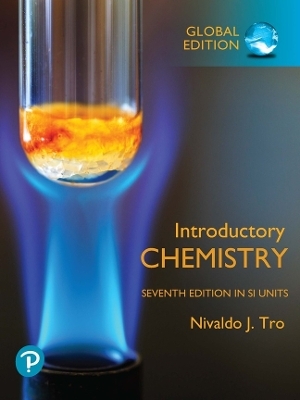
Intermolecular Interactions – Physical Picture, Computational Methods and Model Potentials
Wiley-Blackwell (Hersteller)
978-0-470-86334-3 (ISBN)
- Keine Verlagsinformationen verfügbar
- Artikel merken
The subject of this book - intermolecular interactions - is as important in physics as in chemistry and molecular biology. Intermolecular interactions are responsible for the existence of liquids and solids in nature. They determine the physical and chemical properties of gases, liquids, and crystals, the stability of chemical complexes and biological compounds. In the first two chapters of this book, the detailed qualitative description of different types of intermolecular forces at large, intermediate and short-range distances is presented. For the first time in the monographic literature, the temperature dependence of the dispersion forces is discussed, and it is shown that at finite temperatures the famous Casimir-Polder asymptotic formula is correct only at narrow distance range. The author has aimed to make the presentation understandable to a broad scope of readers without oversimplification. In Chapter 3, the methods of quantitative calculation of the intermolecular interactions are discussed and modern achievements are presented. This chapter should be helpful for scientists performing computer calculations of many-electron systems.
The last two chapters are devoted to the many-body effects and model potentials. More than 50 model potentials exploited for processing experimental data and computer simulation in different fields of physics, chemistry and molecular biology are represented. The widely used global optimisation methods: simulated annealing, diffusion equation method, basin-hopping algorithm, and genetic algorithm are described in detail. Significant efforts have been made to present the book in a self-sufficient way for readers. All the necessary mathematical apparatus, including vector and tensor calculus and the elements of the group theory, as well as the main methods used for quantal calculation of many-electron systems are presented in the appendices.
Ilya G. Kaplan is the Head of Department, Materials Research Institute, National Autonomous University of Mexico. He has been studying the Pauli Exclusion Principle for more than 35 years and is a well-known scientist in this field. He has published 4 books in Russian, 4 books in English, including the Wiley title, Intermolecular Interactions, and 11 book chapters, one of which was devoted to the Pauli Exclusion Principle. He was also an Associate Editor for Wiley's Handbook of Molecular Physics and Quantum Chemistry, published in 2003.
Preface. 1 Background Knowledge. 1.1 The Subject and its Specificity. 1.2 A Brief Historical Survey. 1.3 The Concept of Interatomic Potential and Adiabatic Approximation. 1.4 General Classification of Intermolecular Interactions. References. 2 Types of Intermolecular Interactions: Qualitative Picture. 2.1 Direct Electrostatic Interactions. 2.2 Resonance Interaction. 2.3 Polarization Interactions. 2.4 Exchange Interaction. 2.5 Retardation Effects in Long-Range Interactions and the Influence of Temperature. 2.6 Relativistic (Magnetic) Interactions. 2.7 Interaction Between Macroscopic Bodies. References. 3 Calculation of Intermolecular Interactions. 3.1 Large Distances. 3.2 Intermediate and Short Distances. References. 4 Nonadditivity of Intermolecular Interactions. 4.1 Physical Nature of Nonadditivity and the Definition of Many-Body Forces. 4.2 Manifestations of Nonadditive Effects. 4.3 Perturbation Theory and Many-Body Decomposition. 4.4 Many-Body Effects in Atomic Clusters. 4.5 Atom-Atom Potential Scheme and Nonadditivity. References. 5 Model Potentials. 5.1 Semiempirical Model Potentials. 5.2 Determination of Parameters in Model Potentials. 5.3 Reconstructing Potentials on the Basis of Experimental Data. 5.4 Global Optimization Methods. References. Appendix 1: Fundamental Physical Constants and Conversion Table of Physical Units. Appendix 2: Some Necessary Mathematical Apparatus. A2.1 Vector and Tensor Calculus. A2.1.1 Definition of vector; the addition law. A2.1.2 Scalar and vector products; triple scalar product. A2.1.3 Determinants. A2.1.4 Vector analysis; gradient, divergence and curl. A2.1.5 Vector spaces and matrices. A2.1.6 Tensors. A2.2 Group Theory. A2.2.1 Properties of group operations. A2.2.2 Representations of groups. A2.2.3 The permutation group. A2.2.4 The linear groups. The three-dimensional rotation group. A2.2.5 Point groups. A2.2.6 Irreducible tensor operators. Spherical tensors. References. Appendix 3: Methods of Quantum-Mechanical Calculations of Many-Electron Systems. A3.1 Adiabatic Approximation. A3.2 Variational Methods. A3.2.1 Self-consistent field method. A3.2.2 Methods taking into account the electron correlation. A3.2.2.1 r12-dependent wave functions. A3.2.2.2 Configuration interaction. A3.2.2.3 Coupled cluster method. A3.2.2.4 Density functional theory approach. A3.3 Perturbation Theory. A3.3.1 Rayleigh-Schr..odinger perturbation theory. A3.3.2 Moller-Plesset perturbation theory. A3.3.3 Operator formalism and the Brillouin-Wigner perturbation theory. A3.3.4 Variational perturbation theory. A3.3.5 Asymptotic expansions; Pade approximants. References. Index.
| Erscheint lt. Verlag | 7.6.2006 |
|---|---|
| Verlagsort | Hoboken |
| Sprache | englisch |
| Maße | 181 x 234 mm |
| Gewicht | 668 g |
| Themenwelt | Naturwissenschaften ► Chemie |
| ISBN-10 | 0-470-86334-X / 047086334X |
| ISBN-13 | 978-0-470-86334-3 / 9780470863343 |
| Zustand | Neuware |
| Haben Sie eine Frage zum Produkt? |
aus dem Bereich

